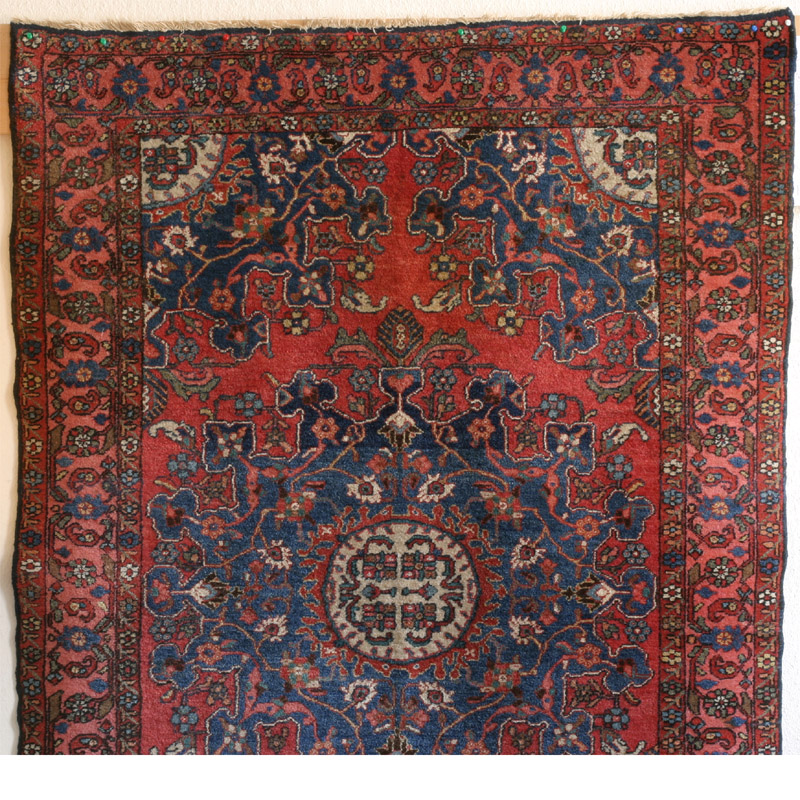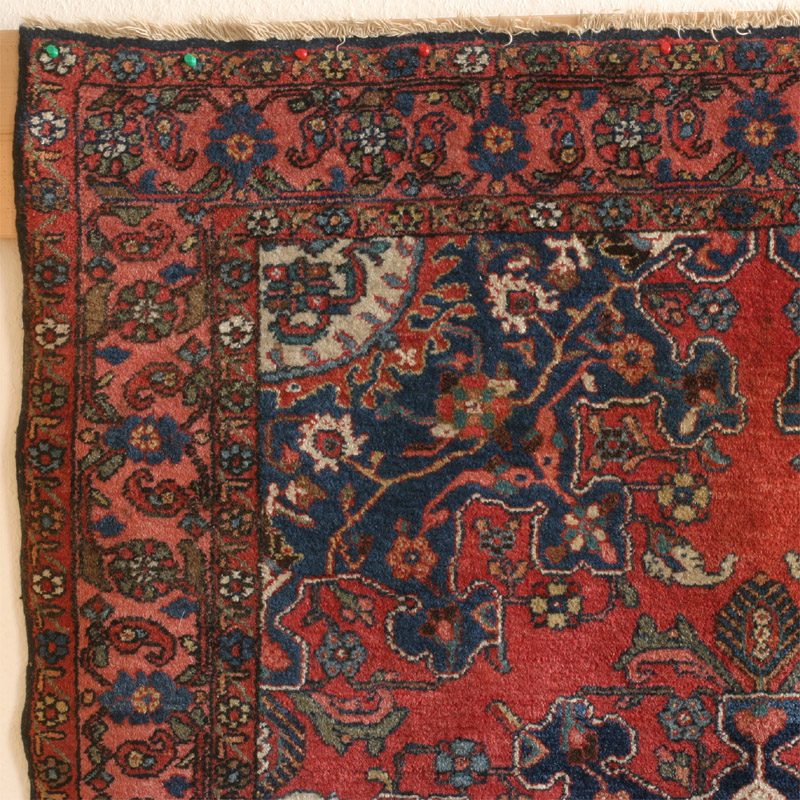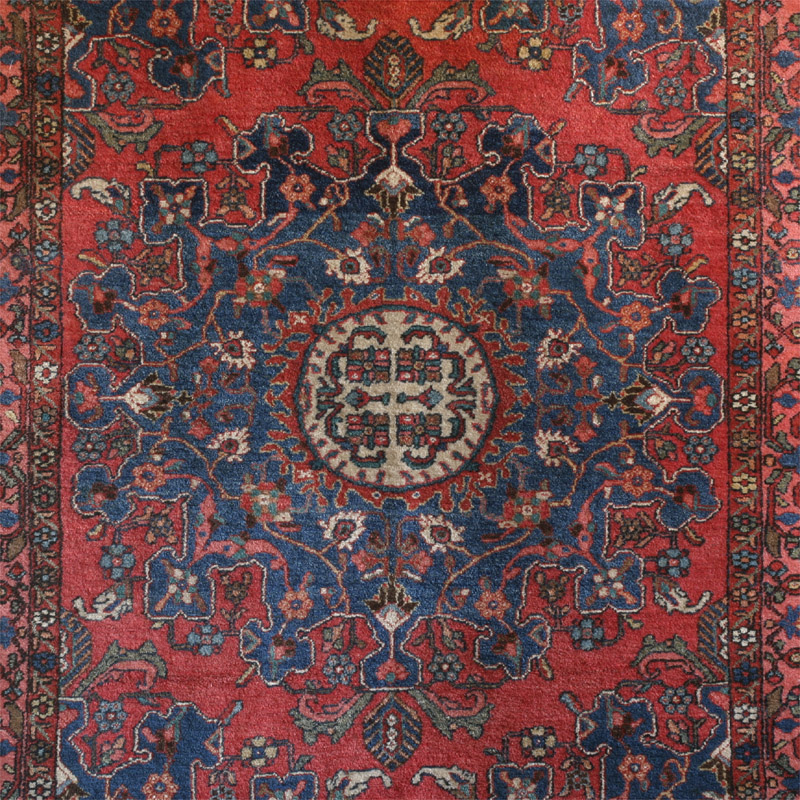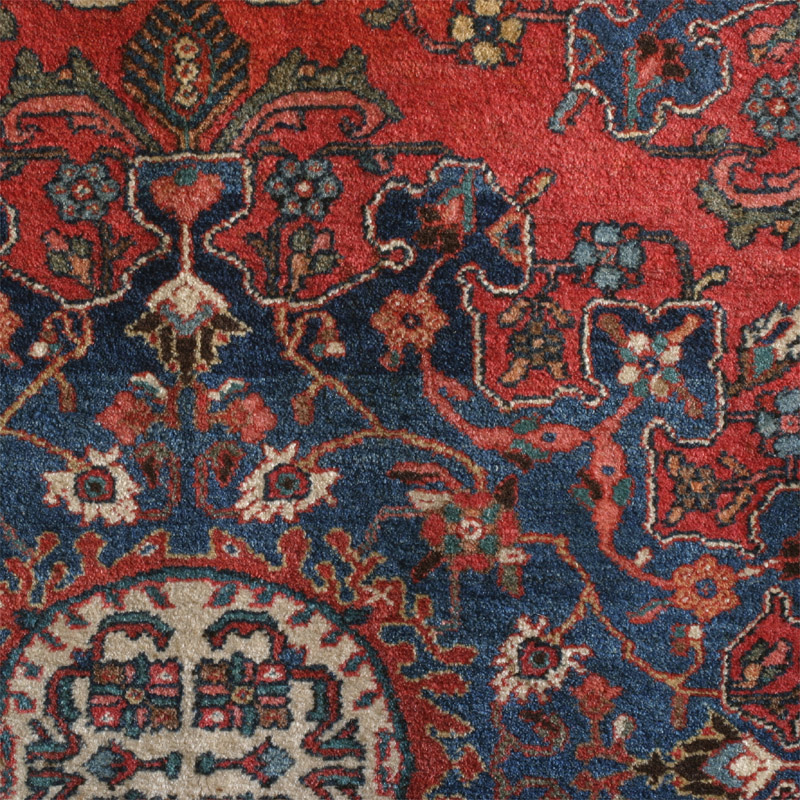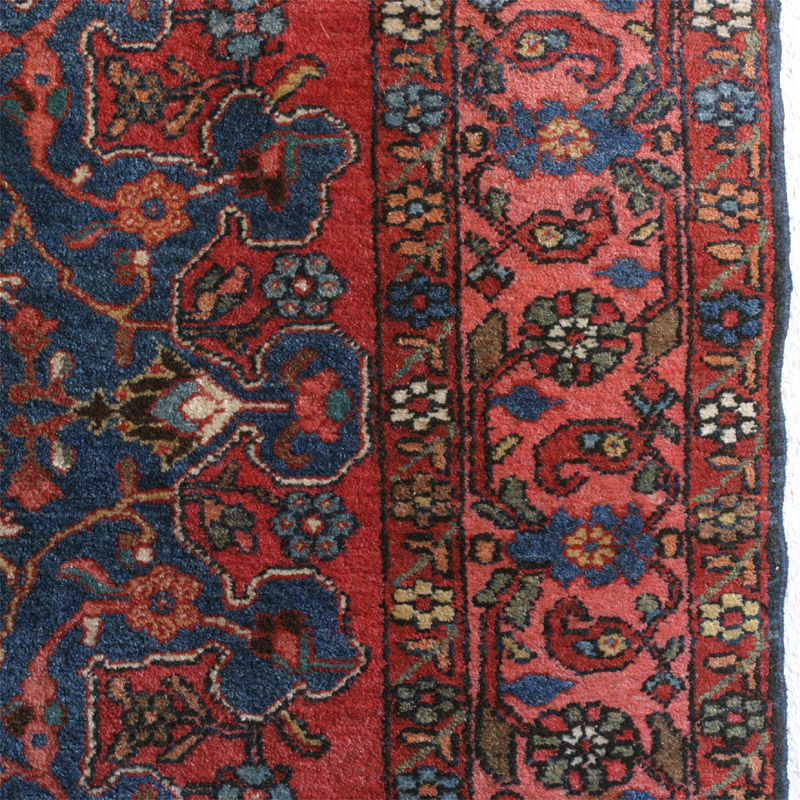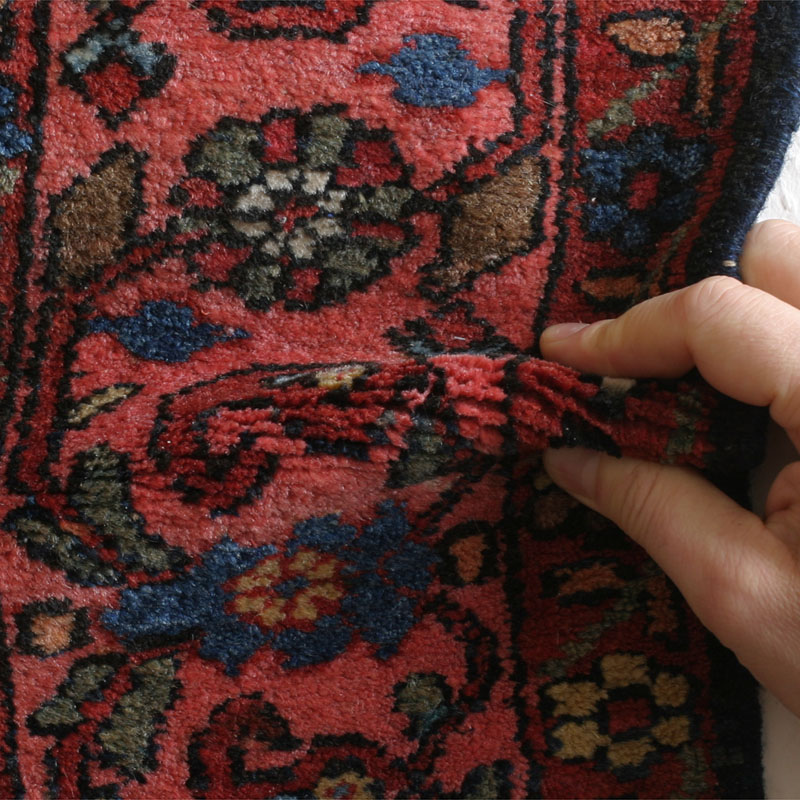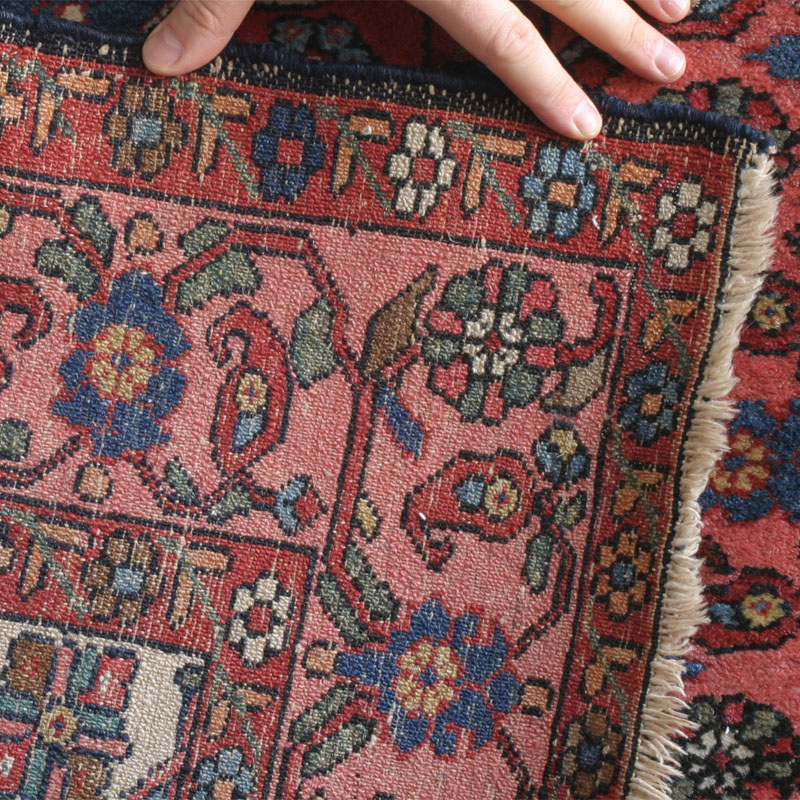Click on image to view in larger size.
Click here to see image in extra large size (warning: large image!!, 1.6 MB).
Tafresh rug (from the village of Tafresh southwest of Saveh, 110 km east of Hamadan), showing the typical round 'clockface' medallion. A very similar rug is shown by Willborg in his book Hamadan as No. 19 — the only difference being that in his rug, the ground colour of the four corner pieces is dark red, not medium blue as in this one. This particuar rug seems more squarish then most of the dozars; anmd indeed, the whole design is slightly compressed vertically, compared wtih Ford's and Willborg's reference examples.
A well balanced design, which is the most typical for Tafresh, is the 16-petalled floral medallion with a repetition of medallion quarters as corner spandrels. According to Ford, the medallion may represent the sunbird or the sun iself with radiating sun beams, which is a symbol of the Zoroastrian (Parsee) religion. In any case, symbolically charged or merely ornamenal, the design is beautifully balanced and works very well. The border shows scrolling S-shaped arabesques linking alternately rosettes and a system of blue oblong cartouches enclosing small rosettes which are symmetrically flanked by red botehs— a design identical to the Willbog rug (though rendered in different colours).
The typical Tafresh palette dominated by a light madder-based salmon red ground and a beautiful abrashed dark to medium blue in the medallion and corners. A lighter hue of the same salmon red is used as main border background colour. Next to the off-while used in the round centre of the medallion, there is a range of subtle sparingly used colours wich all look organic to me: apricot, light blue, light blue-green, a mottled olive green, medium brown, and dark brown.
The rug measures 186 x 135 cm (6ft.1in. x 4ft.5in.). The weave is not depressed. Warps are off-white cotton, wefts are grey and brown cotton or maybe wool (hard to determine, the weave is tight and there are no stray ends). There is no warp depression, and just 2-3 wefts after each row of knots, so it is not a very pronounced gabbeh weave. The weave is very fine for Hamadan, the knot count is v.43/dm, h.38/dm = 1634 knots per sqare dm (roughly 142 kpsi) which translates to a V/H ratio of 1.39. The handle is firm and flexible, the pile medium short (ca. 7 mm) and dense. The pile wool is soft, very nice and glossy.
Perfect condition, no signs of wear, the same good pile anywhere. The one-cord selvedges wrapped in dark blue wool look complete and original. The lower end might have has a short kelim end, which no longer exists. Except perhaps for one or two rows of plain dark blue pile as seen at the top, the lower secondary outer border is complete. The rug is clean, no holes, stains, or any other issue.
